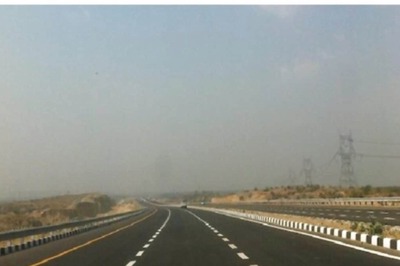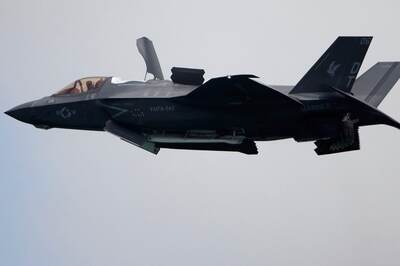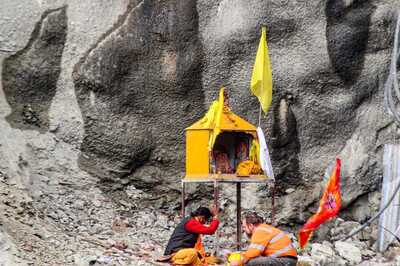
views
This week marks a significant diplomatic milestone for India as it prepares to welcome a number of world leaders and heads of several international organisations for the upcoming G20 summit in New Delhi. Amid this high-profile diplomatic gathering, Prime Minister Narendra Modi is attending the East Asia Summit (EAS) in Jakarta in person.
PM Modi’s presence at the EAS underscores India’s unwavering commitment to the Association of Southeast Asian Nations (ASEAN) and its centrality — the foundation of which was laid with the initiation of the Look East Policy in 1992 and was carried forward by the Modi administration in 2014 with the upgradation to the Act East Policy. In contrast, Chinese President Xi Jinping will be notably absent from both the EAS in Jakarta and the G20 summit in New Delhi. Instead, Chinese Premier Li Qiang will represent China at the two fora. While China has predominantly been represented by its Premier at the EAS, it is unusual for the Chinese President to be absent from the G20 summit.
Once again, no specific reason has been provided for this decision, but it suggests that engagement with the ASEAN and the G20 is of lower priority on Xi’s diplomatic agenda right now. Xi’s absence could be interpreted as a lack of enthusiasm for regional platforms, which raises doubts about Beijing’s dedication to the ethos of multilateralism, ASEAN-led mechanisms and their overall significance. With both India and Southeast Asia, it appears that China’s emphasis is more on escalating tensions rather than actively seeking solutions to the underlying problems.
Just last week, China unveiled a highly-contested map, asserting territorial claims over parts of India, sections of the South China Sea, and Taiwan, designating them as Chinese territory. This action sparked widespread protests from India, Taiwan, and at least six Southeast Asian nations. Prior to this, China’s use of water cannons against the Philippine Coast Guard ships had drawn international condemnation and backlash against China.
China’s cartographic aggression and its reluctance to address the differences may have the unintended consequence of diminishing its influence within the ASEAN region. China’s unwillingness to proactively address the South China Sea dispute within the ASEAN framework underlines the ongoing necessity for the bloc to unite and present a cohesive stance towards China, an objective that has seen limited progress thus far.
China’s actions in the South China Sea have been eroding the rule of law, presenting a clear and immediate challenge to the core principles of ASEAN’s centrality and unity. In contrast, India is progressively regarded as a dependable partner and holds a favourable position within ASEAN. This positive perception is rooted in India’s longstanding and multifaceted partnership with both the bloc and individual member countries. India is also gaining importance as a significant partner for Southeast Asian countries, with the growing rivalry between the United States and China contributing to the challenges faced by ASEAN-led mechanisms’ relevance and centrality in the region. India has notably positioned ASEAN centrality at the core of its Indo-Pacific policy, distinguishing itself as the first country to do so.
There is a stark contrast in how China and India approach their engagement with the ASEAN. China has failed to display its commitment to cooperation with the ASEAN and resolve the dispute amicably, whereas India has demonstrated its trustworthiness to its ASEAN partners. While China presents challenges, India represents a unique opportunity for growth and development within ASEAN. China is progressively viewed as a disruptive force, whereas India is perceived as a provider of solutions. India treats Southeast Asian countries as equals, whereas China has been known to perceive Southeast Asian countries as smaller, as evident in the 2010 statement by former Chinese Foreign Minister Yang Jiechi: “China is a big country, and other countries are small countries, and that’s a fact.”
These factors highlight India’s status as a vital economic, security, and developmental partner for countries in the region. A prime example of this partnership is the inaugural ASEAN-India maritime exercise (AIME-2023) in May this year, which highlights the depth of cooperation and engagement. Moreover, the India-Philippines BrahMos deal, valued at $375 million, serves as evidence of India’s staunch commitment as a reliable defence partner for regional countries. Additionally, during the visit of his Filipino counterpart to New Delhi, India’s Minister of External Affairs, S Jaishankar, expressed support for the Philippines regarding the 2016 arbitral award concerning the South China Sea dispute.
While China has not traditionally been the primary driver behind India’s proactive engagement with ASEAN, it is gradually becoming a significant factor in shaping a shared agenda. India’s approach and interests often align with those of ASEAN rather than diverge. The rise of India is not seen as a detriment to the bloc; on the contrary, it complements it.
China’s credibility within the ASEAN region is waning due to its increasingly assertive foreign policy stance. Seemingly, ASEAN is recognising the potential risks associated with a Taiwan invasion and heightened aggression in the South China Sea, which threaten the stability of the Indo-Pacific region and undermine the vision of a free and open Indo-Pacific. From India to Taiwan to Southeast Asia, countries are confronted with a common challenge: How to effectively address the challenges posed by China. In this context, the India-ASEAN partnership holds significant potential and promise.
Sana Hashmi is Fellow at Taiwan-Asia Exchange Foundation and George H. W. Bush Foundation for U.S.-China Relations. She tweets at @sanahashmi1. Views expressed in the above piece are personal and solely that of the author. They do not necessarily reflect News18’s views.




















Comments
0 comment